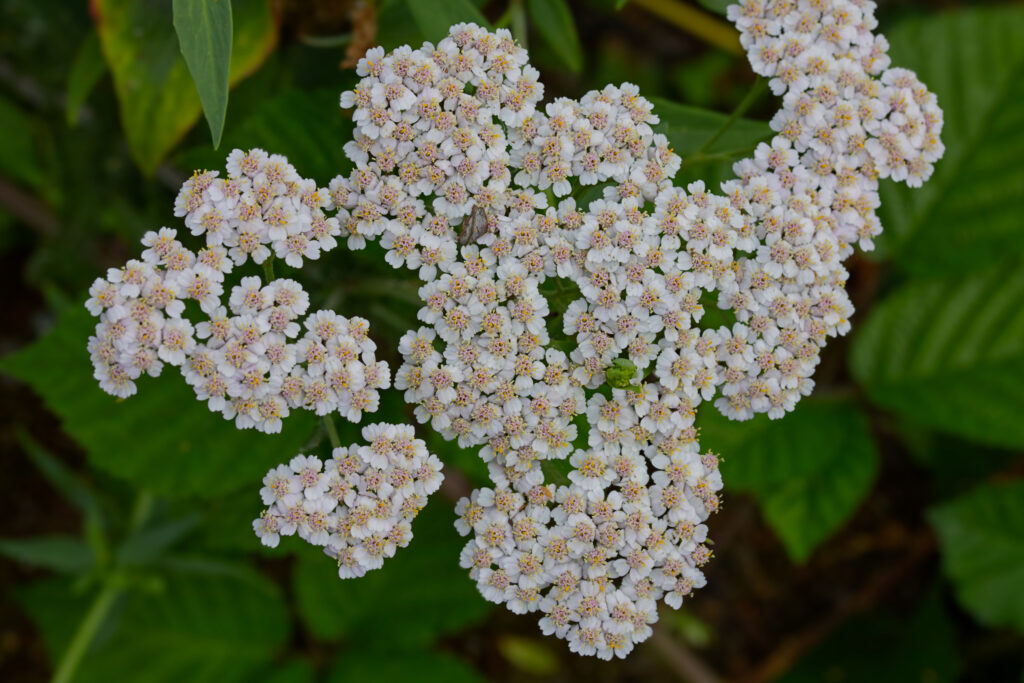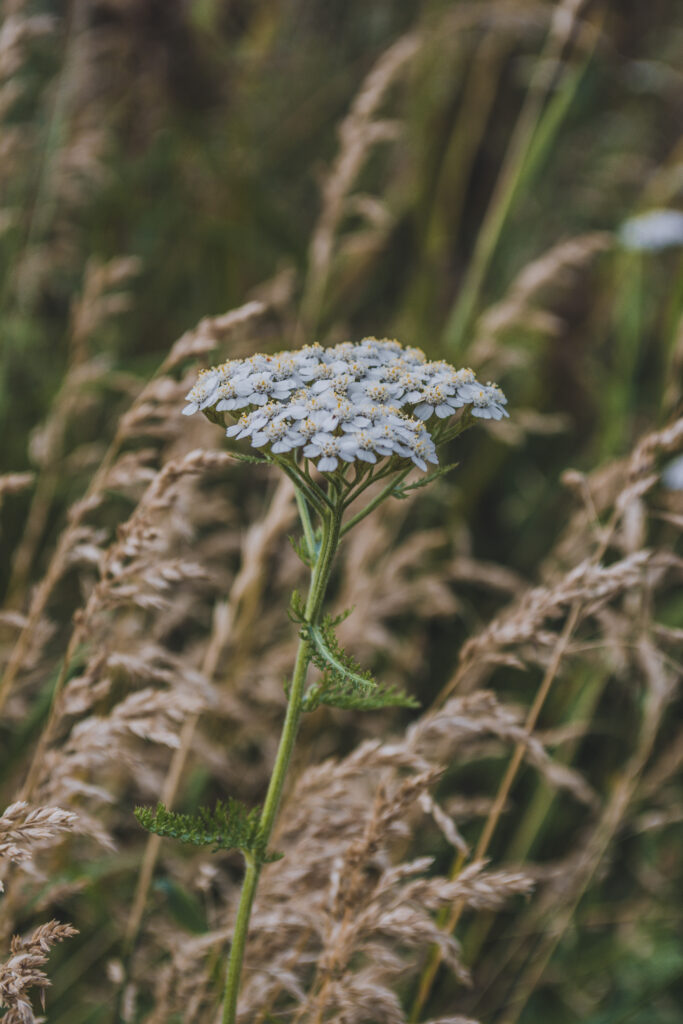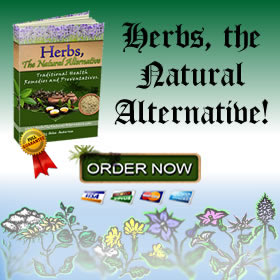An Introduction To Yarrow: Nature’s Wondrous Herb
Imagine stepping into a world filled with the wonders of nature, where the secrets of healing and wellness are waiting to be discovered. In this enchanting realm, you stumble upon a humble herb called yarrow. Known for its remarkable healing properties and rich history, yarrow has captured the hearts of herbal enthusiasts for centuries. Join us on a journey as we explore the wonders of this extraordinary plant and uncover the many ways it can enhance your health and well-being. Get ready to embrace the power of yarrow, nature’s very own wondrous herb.
What is Yarrow?
Yarrow, also known by its scientific name Achillea millefolium, is a versatile herb that has been used for centuries for its medicinal properties and herbal benefits. This perennial plant belongs to the Asteraceae family and is native to Europe and Asia, but has also been naturalized in North America. Yarrow is known for its beautiful and delicate white or pink flowers, and its feathery, fern-like leaves.
Botanical description
The botanical description of yarrow includes its unique physical characteristics and features. Yarrow plants typically grow to be about two to three feet tall, with a spread of about one to two feet. The leaves are thin, lance-shaped, and deeply divided, giving them a feathery appearance. The flowers grow in clusters at the top of the stems and have a daisy-like shape, with numerous small white or pink petals and a yellow center. The plant blooms from late spring to early fall, depending on the climate.
Traditional uses
Yarrow has a long history of traditional uses across cultures and civilizations. Ancient Greeks, Romans, and Egyptians revered yarrow for its various medicinal properties and believed it had mystical powers. It was commonly used to treat wounds, reduce inflammation, and alleviate digestive issues. In traditional Chinese medicine, it was used to treat conditions such as fever, colds, and nosebleeds. Indigenous cultures in North America also utilized yarrow for its healing properties, including treating toothaches and skin conditions.
Historical significance of Yarrow
Ancient civilizations
Yarrow played a significant role in ancient civilizations, where it was highly regarded for its healing properties. In Ancient Greece, yarrow was associated with the Greek hero Achilles, who was said to have used the plant to treat the wounds of his soldiers during the Trojan War. It was believed that yarrow could stop bleeding, protect against infection, and promote faster healing. The Romans also used yarrow in their medical practices and considered it an essential herb. Egyptian papyri dating back to 1,000 BCE mention yarrow as a valuable plant, showcasing its longstanding historical significance.
Medieval Europe
During the Middle Ages, yarrow remained highly valued for its medicinal uses in Europe. It was commonly used to treat wounds, ease digestive discomfort, and even to ward off evil spirits. In folklore, yarrow was believed to have protective qualities and was often carried as an amulet or included in rituals. It was also associated with love and used in love divination rituals. Yarrow’s popularity as a medicinal herb continued to grow, and by the 17th century, it was included in many pharmacopeias across Europe.

Cultivation and Harvesting
Ideal conditions
Yarrow is a hardy plant that can adapt to various growing conditions. It prefers full sun but can tolerate partial shade. Yarrow can thrive in well-drained soil and is even capable of growing in poor, rocky, or sandy soils. It is drought-tolerant once established but can benefit from occasional watering during dry spells. Yarrow is adaptable to a wide range of climates, but it grows best in temperate regions with mild summers and cold winters.
Propagation methods
Yarrow can be propagated through both seeds and divisions. If starting from seeds, they should be sown in the spring or fall, either directly in the ground or in pots. The soil should be lightly tilled and moist for successful germination. Division can also be done in the spring or fall by separating the plant’s root clumps and replanting them in a prepared area. Yarrow can spread quickly, so giving it enough space to grow is essential.
Harvesting tips
The aerial parts of the yarrow plant, such as the flowers, leaves, and stems, can be harvested for various uses. The best time to harvest yarrow is when the plant is in full bloom, usually in the summer months. Harvesting should be done on a dry day in the morning when the aromatic oils are at their peak. The leaves and flowers can be plucked, and the stems can be cut at the desired length. It is important to avoid over-harvesting yarrow, as leaving some flowers on the plant will ensure its continued growth.
Chemical Composition
Active compounds
Yarrow contains a rich array of active compounds that contribute to its medicinal properties. These include flavonoids, tannins, alkaloids, sesquiterpene lactones, and volatile oils. Flavonoids and tannins possess antioxidant properties and can help protect the body against oxidative stress. Alkaloids have been found to exhibit antimicrobial and anti-inflammatory effects. Sesquiterpene lactones contribute to yarrow’s bitter taste and are known for their anti-inflammatory and antibacterial properties. Volatile oils, such as chamazulene, have strong anti-inflammatory effects.
Essential oils
Yarrow essential oil is extracted from the plant’s flowers and leaves through steam distillation. The oil is pale yellow to blue in color and has a distinct herbal scent. Yarrow essential oil is valued for its therapeutic properties, including its anti-inflammatory, analgesic, and antimicrobial effects. It can be used in aromatherapy, massage oils, and skincare products to promote relaxation and overall well-being.

Medicinal Properties of Yarrow
Anti-inflammatory benefits
Yarrow possesses potent anti-inflammatory properties that can help reduce inflammation in the body. The compounds found in yarrow, such as sesquiterpene lactones and flavonoids, can inhibit the production of inflammatory molecules in the body. This makes yarrow beneficial for conditions such as arthritis, gout, and inflammatory skin conditions like eczema or psoriasis.
Antimicrobial effects
Yarrow has historically been used as a natural remedy for its antimicrobial effects. The active compounds in yarrow, including alkaloids and volatile oils, have been shown to possess antimicrobial properties, making it effective against various bacteria and fungi. Yarrow can be used topically to treat minor cuts, wounds, and skin infections, promoting faster healing and preventing infection.
Wound healing properties
Yarrow has long been prized for its wound healing properties. It contains a compound called achillein, which is believed to stimulate the production of collagen and promote tissue regeneration. Yarrow can be used topically as a poultice or in the form of a salve to help heal wounds, cuts, bruises, and other skin injuries.
Health Benefits of Yarrow
Digestive health
Yarrow has been used traditionally to promote digestive health and alleviate gastrointestinal discomfort. It can help stimulate appetite, improve digestion, and ease symptoms of indigestion, bloating, and flatulence. Yarrow’s bitter properties can also stimulate the production of digestive enzymes, aiding in the breakdown and absorption of nutrients.
Respiratory benefits
Yarrow has been utilized for its respiratory benefits, particularly in soothing coughs and congestion. The anti-inflammatory and antimicrobial properties of yarrow make it useful in alleviating symptoms of respiratory infections, bronchitis, and asthma. Consuming yarrow tea or using yarrow essential oil in steam inhalation can help relieve respiratory discomfort.
Immune system support
Yarrow can support the immune system due to its antimicrobial and anti-inflammatory effects. The plant’s active compounds can help fight off infections and stimulate immune cell activity. Regular consumption of yarrow tea or incorporating yarrow into your diet can help strengthen the immune system and promote overall wellness.

Home Remedies with Yarrow
Yarrow tea recipe
Yarrow tea is a simple and effective way to enjoy the benefits of this herb. To prepare yarrow tea, steep one to two teaspoons of dried yarrow flowers or leaves in a cup of hot water for about 10 minutes. Strain the tea and sweeten with honey if desired. Yarrow tea can be enjoyed daily or as needed to support various aspects of health, such as digestion or respiratory health.
Yarrow tincture preparation
Yarrow tincture can be made by steeping dried yarrow leaves and flowers in a high-proof alcohol, such as vodka or rum. Fill a glass jar halfway with dried yarrow, then fill the jar with alcohol, ensuring that the plant material is completely covered. Seal the jar, store it in a cool, dark place, and shake it daily for about four to six weeks. After the steeping period, strain the liquid, resulting in a potent yarrow tincture that can be used topically or taken orally.
Yarrow salve for skin ailments
Yarrow salve is a beneficial remedy for various skin ailments, including cuts, wounds, rashes, and burns. To make a yarrow salve, infuse dried yarrow flowers in a carrier oil, such as olive oil or coconut oil, using a double boiler method. Once the oil has absorbed the yarrow’s properties, strain it and combine it with beeswax. Heat the mixture until the beeswax melts, then pour it into containers to solidify. Apply the yarrow salve topically to soothe and promote the healing of skin conditions.
Yarrow in Folklore and Mythology
Yarrow in Greek mythology
In Greek mythology, yarrow was associated with the hero Achilles. Legend has it that Achilles used yarrow to treat the wounds of his fellow soldiers during battles, earning yarrow the nickname “Achillea.” It was believed that the plant possessed supernatural powers and could heal wounds quickly and protect against infection. The association between yarrow and Achilles has persisted throughout history, highlighting yarrow’s esteemed status in ancient Greece.
Yarrow as a magical herb
Yarrow has had a long-standing reputation as a magical herb with mystical properties. In folklore and traditional beliefs, yarrow was considered a protective plant that could ward off evil spirits and negative energies. It was often carried as an amulet or used in spells and rituals to enhance psychic abilities, divination, and love magic. Yarrow was believed to bring luck, courage, and enhance one’s connection to the spiritual realm.
Yarrow in Modern Herbalism
Popular in naturopathy
Yarrow continues to be highly valued in modern herbalism and naturopathy. It is often included in herbal remedies, tinctures, and supplements aimed at supporting various aspects of health. Naturopaths may recommend yarrow for its anti-inflammatory, antimicrobial, and wound healing properties. It is also considered a tonic herb that can support overall wellness and promote balance within the body.
Potential side effects and precautions
While yarrow is generally safe for most people, some individuals may be sensitive or allergic to the plant. It is advisable to test a small amount of yarrow on the skin before using it topically to check for any adverse reactions. Pregnant and breastfeeding women should avoid yarrow, as it can stimulate uterine contractions. It is always recommended to consult with a healthcare professional before using any new herbal remedy, especially if you have pre-existing health conditions or are taking medications.
Yarrow in Culinary Uses
Edible parts of the plant
Certain parts of the yarrow plant are edible and can be incorporated into culinary creations. The young leaves and flowers of yarrow can be used fresh or dried in salads, soups, stews, and teas. They have a slightly bitter taste and add a unique flavor to dishes. Yarrow leaves can also be used as a substitute for hops in brewing herbal beers and ales.
Recipes incorporating yarrow
Yarrow Salad: Combine fresh yarrow leaves with mixed salad greens, cherry tomatoes, cucumbers, and a light vinaigrette dressing for a refreshing and nutritious salad.
Yarrow Infused Oil: Infuse yarrow flowers in olive oil for several weeks to create a flavorful and aromatic oil. Use it in dressings, marinades, or as a drizzle for roasted vegetables.
Yarrow Herbal Tea Blend: Mix dried yarrow leaves and flowers with other herbal teas like chamomile, mint, or lemon balm for a soothing and aromatic blend. Steep in hot water for a few minutes and enjoy.
In conclusion, yarrow is a fascinating herb with a rich history and a multitude of uses. From its traditional medicinal properties to its culinary versatility, yarrow continues to captivate herbal enthusiasts and researchers alike. Whether you are seeking natural remedies, exploring folklore and mythology, or simply adding a distinctive flavor to your dishes, yarrow proves to be nature’s wondrous herb. Embrace the wonders of yarrow and discover the many ways it can enhance your life and well-being.

